Bold, groundbreaking, straight to digital
According to Dr. Mai Liem Truc, the big question for the leaders of the Postal sector at that time was "how to develop the sector in conditions of siege and embargo, and the State had no investment resources?". In those years, the world began to transfer from analog technology to digital technology, the leadership discussed that they had to go straight to the most modern technology. That was a very bold thought.
The first problem was where to get the money to buy equipment, this was the biggest problem after "finalizing" the digitalization strategy in 1987. At that time, the total foreign currency that the entire postal industry earned in 1989 was 1.7 million USD, only enough to buy 2 Telex switchboards for Hanoi and Ho Chi Minh City, so where to get the money to buy equipment worth tens of millions of USD.
In addition, with technology being embargoed, which partner could provide equipment? Most of the staff had returned from the battlefield more than ten years ago. So how could they operate and manage it? At that time, no one believed the industry could do it, including the Party and State leaders. But the desire for breakthrough change and the realization of the Party's innovation policy urged the entire industry to do it.
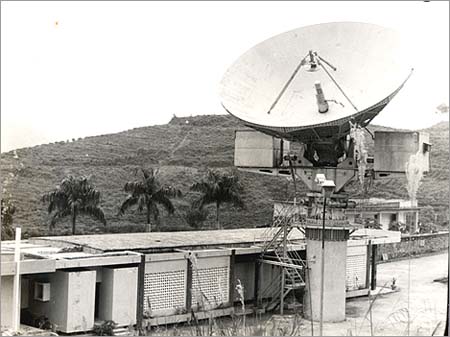
In July 1980, the Hoa Sen I ground satellite communication station was put into use for the first time in our country, marking a turning point in the development of international telecommunications in Vietnam.
Dr. Mai Liem Truc recalled: "The first solution was to open up and attract foreign investment. When we surveyed many partners, they were worried about Vietnam being embargoed. Only the Australian Government had a more realistic view, so they supported OTC Company to do business with Vietnam. In October 1988, we officially signed a Business Cooperation Contract (BCC) with Telstra worth 15 million USD to build two satellite transceiver stations. That was probably also the largest foreign investment contract of 1988. After only 1 year, when we saw that the market prospects were very good, the contract was changed to 10 years with a value of nearly 120 million USD, Vietnam got 68%, Australia got 32% of the profit."
Contracts with corporations such as Telstra, Comvik, etc. have brought hundreds of millions of dollars to the country, helping the industry purchase modern equipment from abroad, forming a widespread modern telecommunications infrastructure, on par with strong countries in the region.
From those initial steps, Vietnam’s reputation in the eyes of foreign investors has increased significantly. Successful cooperation steps have changed the West’s view of Vietnam. They have created confidence for other investors to do business in Vietnam, even though they are afraid of being slow and missing out on opportunities.
Another important meaning is that opening up, inviting investment and trade exchange, communication must be smooth, so that international investors can enter Vietnam. Therefore, telecommunications must not only take on the task of developing the industry, but also "go one step ahead". As it is now said, it is preparing soft infrastructure to attract investment. Therefore, not developing telecommunications infrastructure will hinder the innovation process.
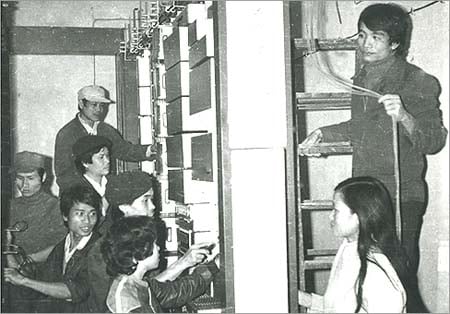
Installing the first 3000-number automatic telephone switchboard in Hanoi.
Since the early 1990s, the Post and Telecommunications sector has also played a very important role in normalizing relations with the United States. In 1992, the US Senate held a hearing on lifting the telecommunications embargo against Vietnam. In May 1992, the US Government officially lifted the telecommunications embargo, unlocked the 84 code, and resumed communication between the two countries. This victory contributed to the process of lifting the economic embargo in 1994 and normalizing diplomatic relations between Vietnam and the United States in 1995. This was the greatest success of "telecommunications diplomacy" in the renovation period, using telecommunications to open the door to the United States.
Determined to bring the Internet to Vietnam
In 1991, realizing the great advantages of the Internet, the leaders of the Ministry of Information and Communications were determined to bring it to Vietnam, but to bring the Internet to Vietnam, three conditions had to be met: There had to be an automatic telephone network connecting domestically and internationally; there had to be businesses, units, and officials who understood Internet technology to organize business exploitation and provide services to society; and it had to be approved by the Party and State leaders.
During this period, enterprises such as VDC, Institute of Information Technology, FPT also participated in research and achieved many good results. Vietnam has a widespread automatic telephone network system connecting domestically and internationally. This is a very necessary preparation step.
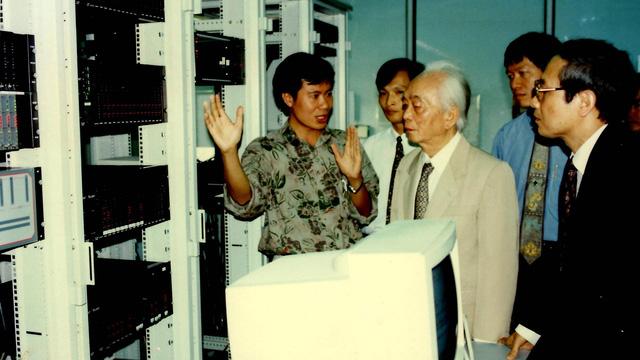
General Vo Nguyen Giap visited the first Internet server system in Vietnam of VDC company - a subsidiary of VNPT.
In March 1997, the Prime Minister signed a decision to establish the National Internet Coordination Committee. At that time, Prime Minister Phan Van Khai instructed the leaders of the Industry to try to manage the Internet well, because if it was opened and then had to be closed, they would not know how to explain to the world. This was an extremely heavy responsibility.
On November 19, 1997, Vietnam officially connected to the global Internet. In the early days, the Internet infrastructure in Vietnam only had a speed of 64 Kb/s, international connections were limited to the United States and Australia, serving about 300 users. The dial-up service at that time only allowed network access when the phone line was temporarily down, making Internet use inconvenient.
However, with changes in policies and the need for international integration, the Internet in Vietnam has made great strides. If in 1997 there were only more than 200,000 Vietnamese people using the Internet, by 2007, this number had increased to nearly 20 million people, accounting for about 24% of the population. Up to now, the Internet infrastructure has become increasingly modern, fast, highly secure, meeting the needs of use, becoming an essential foundation for digital transformation and the industrialization and modernization of the country...
Breaking the monopoly
In 1995, the Postal Service received the Gold Star Order. At the proudest and most glorious moment, the leaders of the Service also felt signs of stagnation, complacency, and victory.
The successful elimination of the telecommunications monopoly in Vietnam was greatly influenced by the thinking of the late Prime Minister Vo Van Kiet. Since 1995, Prime Minister Vo Van Kiet was the first to have the idea of opening the telecommunications market and eliminating the monopoly by giving direction, so we have had a few more telecommunications companies.
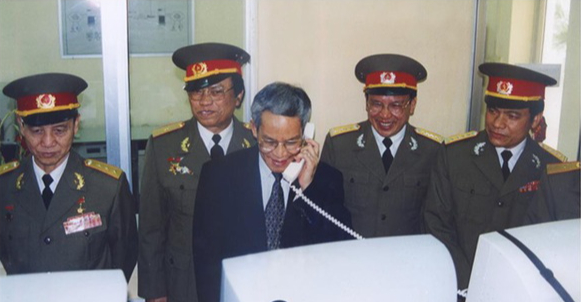
Deputy Minister of Posts and Telecommunications Mai Liem Truc during his visit to Viettel.
In 1997, the General Department of Posts and Telecommunications was determined to open the market. In just one day, 4 Internet operators were licensed, VDC, FPT, NetNam, Saigonnet, and then Viettel.
In 1998, VoIP technology was just introduced. On February 3, 2000, the General Department of Posts and Telecommunications licensed Viettel to open the VolP service - phone over the Internet. This was the first time there was a cheap phone, and also the first time, besides VNPT, there was a second operator participating in the telecommunications market.
It can be said that the appearance of VoIP has created a revolution in tariffs, opening the era of cheap telecommunications for people, creating an important era of capital accumulation for many telecommunications providers. Competition has helped people enjoy cheap tariffs, better service quality, and a sharp increase in the number of users. With the participation of Viettel and Saigon Postel, the Vietnamese telecommunications industry has changed from a monopoly to a more competitive one, promoting market development.
The successful opening of the market was thanks to the courageous decisions, the willingness to take responsibility, and the commitment of a generation of pioneering leaders in the renovation period. Perhaps, the clarity, impartiality, and desire to change the difficult situation of the country created a strong spirit of innovation./.
Source: https://mst.gov.vn/nhung-dot-pha-tao-nen-cuoc-cach-mang-so-dau-tien-cua-nganh-buu-chinh-vien-thong-197250925182006094.htm




![[Photo] Ho Chi Minh City is brilliant with flags and flowers on the eve of the 1st Party Congress, term 2025-2030](https://vphoto.vietnam.vn/thumb/1200x675/vietnam/resource/IMAGE/2025/10/10/1760102923219_ndo_br_thiet-ke-chua-co-ten-43-png.webp)
![[Photo] "Exposing letters" in the flood center of Lang Son](https://vphoto.vietnam.vn/thumb/1200x675/vietnam/resource/IMAGE/2025/10/10/1760080117518_ndo_br_z7101324112737-07cd4d1c01801a8ccf4ae0cbaf31c4a3-507-jpg.webp)

![[Photo] Unique Phu Gia horse hat weaving craft](https://vphoto.vietnam.vn/thumb/1200x675/vietnam/resource/IMAGE/2025/10/10/1760084018320_ndo_br_01-jpg.webp)
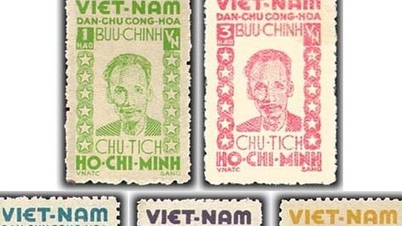
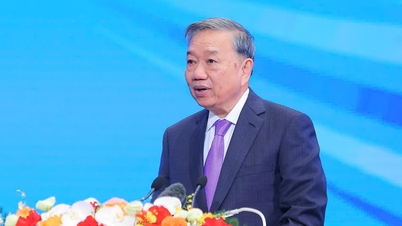

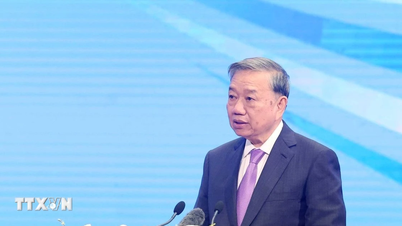




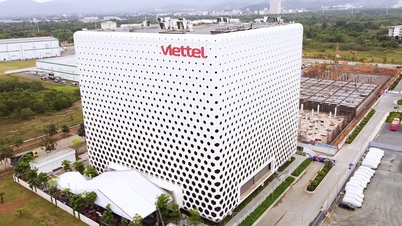
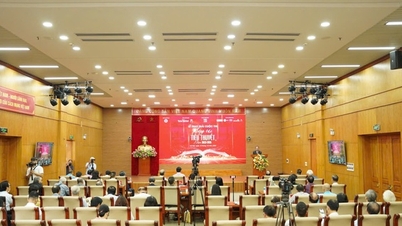

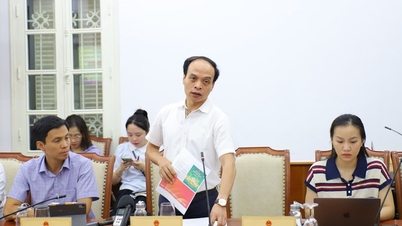








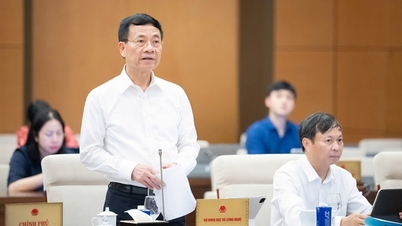
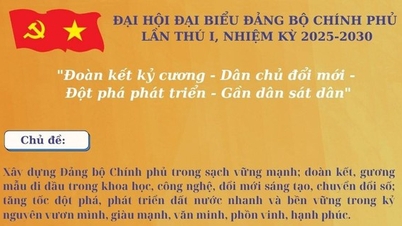























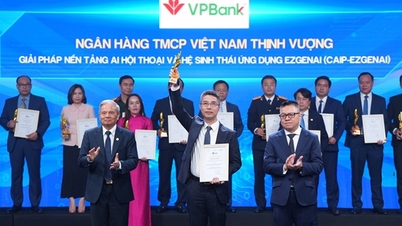












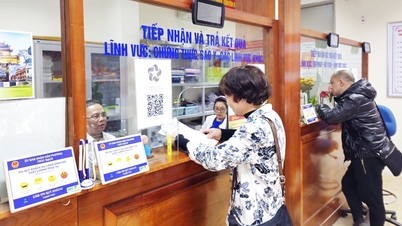














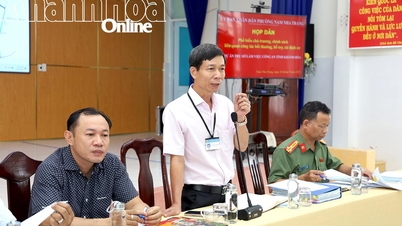











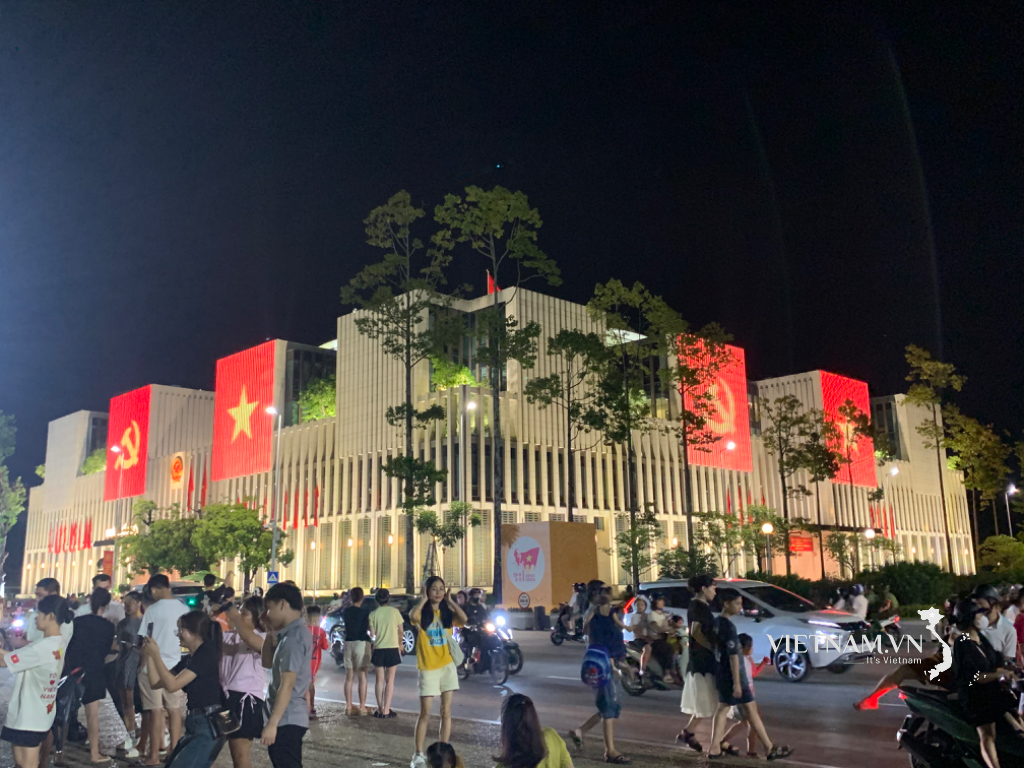


Comment (0)